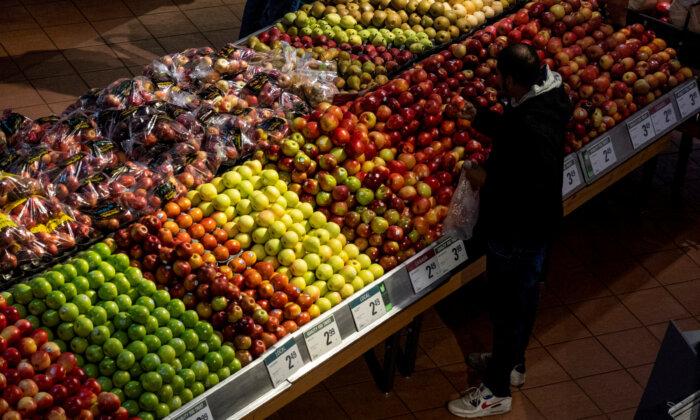An annual report that looks at food prices across the country predicts some relief for consumers in 2024.
“The estimated increase of 2.5–4.5 percent for 2024 provides customers with much-needed relief from the higher increases observed in previous years,” says Stuart Smyth, chair of Agri-Food Innovation and Sustainability Enhancement at the University of Saskatchewan, who took part in the study.
In 2024, a family of four can expect to spend around $700 more on food, for an annual cost of $16,297.20, according to researchers.
“The most significant increases range from 5 percent to 7 percent in the categories of bakery, meat, and vegetables,” the report authors said.
Food Cost Predictions for 2024
While prices for bakery, meat, and vegetables are expected to increase 5 to 7 percent, the cost of other food items is not expected to rise as much.Seafood is predicted to increase between 3 and 5 percent. Fruit and dairy prices could increase between 1 and 3 percent, the report says.
But there could also be some price drops, the authors wrote.
2023 One of the ‘Toughest’ Years
Researchers said that 2023 was a “tumultuous year,” which led to increases in food prices.“The year 2023 posed significant financial challenges for Canadian families, one of the toughest in recent memory,” said Sylvain Charlebois, project lead, professor, and director of the Agri-Food Analytics Lab at Dalhousie University.
This year also saw a record number of food bank visits with a 78.5 percent increase since March 2019. In 2023, there were almost 2 million visits, the highest level on record, according to the press release.
Financial pressure on households saw a drop in spending on food, report authors said.
“Food retail sales data indicates a decline in monthly spend per capita between August 2022 and August 2023 (from $261.24 to $252.89). Estimated annual spending for a family of four in the past year was $693 lower than originally projected.”
Researchers said the reduction is concerning because it indicates “Canadians are decreasing the quantity and quality of food they are buying.”
Price increases varied across the provinces for 2023, with Prince Edward Island and Quebec seeing the highest rate at 6.7 percent. New Brunswick saw a 6.4 percent increase while food costs in Newfoundland and Labrador rose by 6.3 percent. Nova Scotia wasn’t far behind with a 6.2 percent increase in food costs. On the other side of the country, B.C. saw 5.9 percent price hikes in food, while Manitoba saw 5.7 percent. Ontario and Alberta tied for the second lowest price increase at 5.5 percent and Saskatchewan saw the least amount of increase at 5 percent.
Canada’s Food Sector Loses Trust
Canadians have lost trust in food sector corporations, according to researchers.“There is a prevailing sentiment that grocers profit excessively and exploit inflationary trends. Profiteering and price gouging were common media stories,” the Agri-Food release said.
Unfortunately, these actions caused product shortages and shipping delays, the release said.
The action came after Finance Minister Chrystia Freeland and Industry Minister François-Philippe Champagne met with executives from Loblaw, Metro, Empire, Walmart, and Costco in September to discuss stabilizing food costs.







